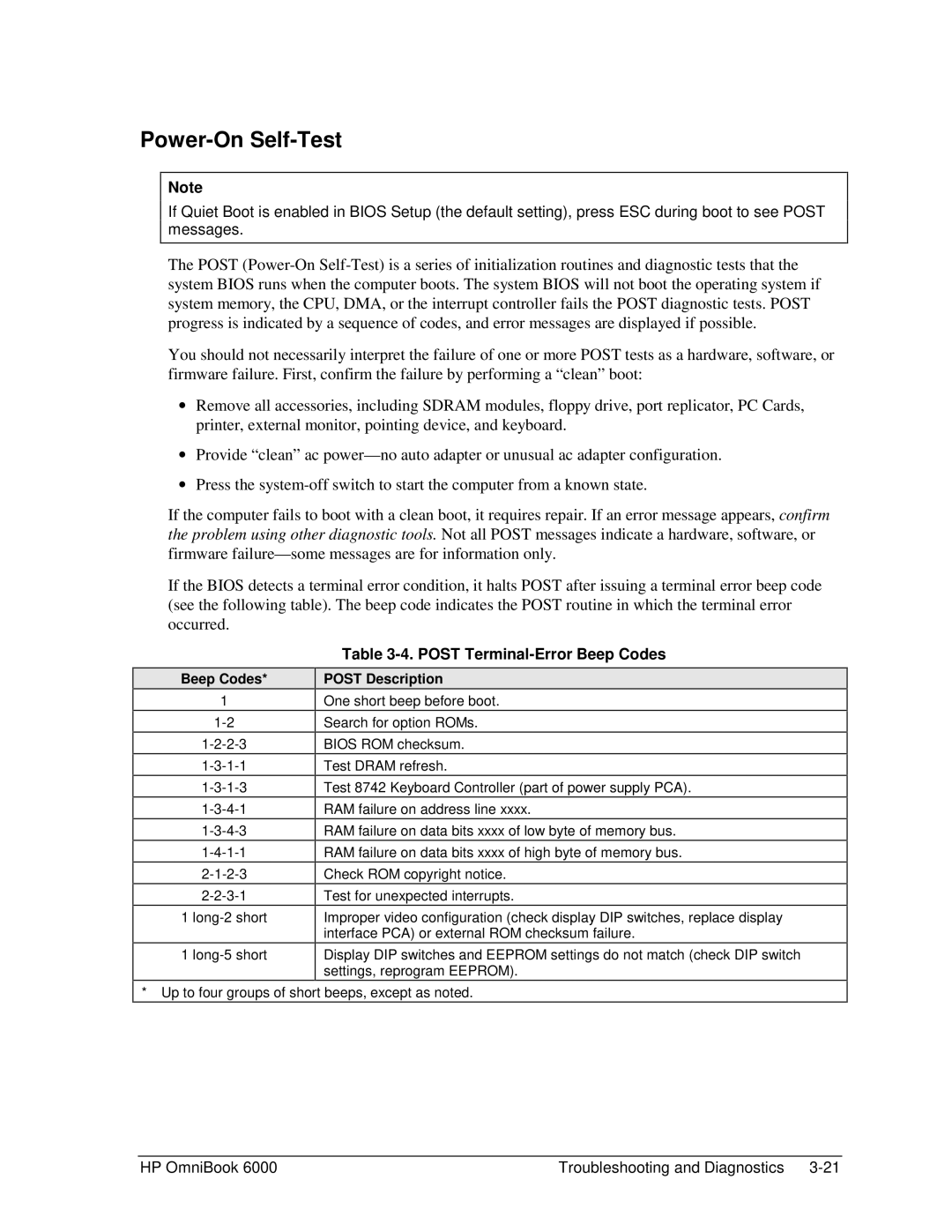
Power-On Self-Test
Note
If Quiet Boot is enabled in BIOS Setup (the default setting), press ESC during boot to see POST messages.
The POST
You should not necessarily interpret the failure of one or more POST tests as a hardware, software, or firmware failure. First, confirm the failure by performing a “clean” boot:
∙Remove all accessories, including SDRAM modules, floppy drive, port replicator, PC Cards, printer, external monitor, pointing device, and keyboard.
∙Provide “clean” ac
∙Press the
If the computer fails to boot with a clean boot, it requires repair. If an error message appears, confirm the problem using other diagnostic tools. Not all POST messages indicate a hardware, software, or firmware
If the BIOS detects a terminal error condition, it halts POST after issuing a terminal error beep code (see the following table). The beep code indicates the POST routine in which the terminal error occurred.
Table 3-4. POST Terminal-Error Beep Codes
Beep Codes*
POST Description
1 | One short beep before boot. |
Search for option ROMs. | |
BIOS ROM checksum. | |
Test DRAM refresh. | |
Test 8742 Keyboard Controller (part of power supply PCA). | |
RAM failure on address line xxxx. | |
RAM failure on data bits xxxx of low byte of memory bus. | |
RAM failure on data bits xxxx of high byte of memory bus. | |
Check ROM copyright notice. | |
Test for unexpected interrupts. | |
1 | Improper video configuration (check display DIP switches, replace display |
| interface PCA) or external ROM checksum failure. |
1 | Display DIP switches and EEPROM settings do not match (check DIP switch |
| settings, reprogram EEPROM). |
*Up to four groups of short beeps, except as noted.
HP OmniBook 6000 | Troubleshooting and Diagnostics |
